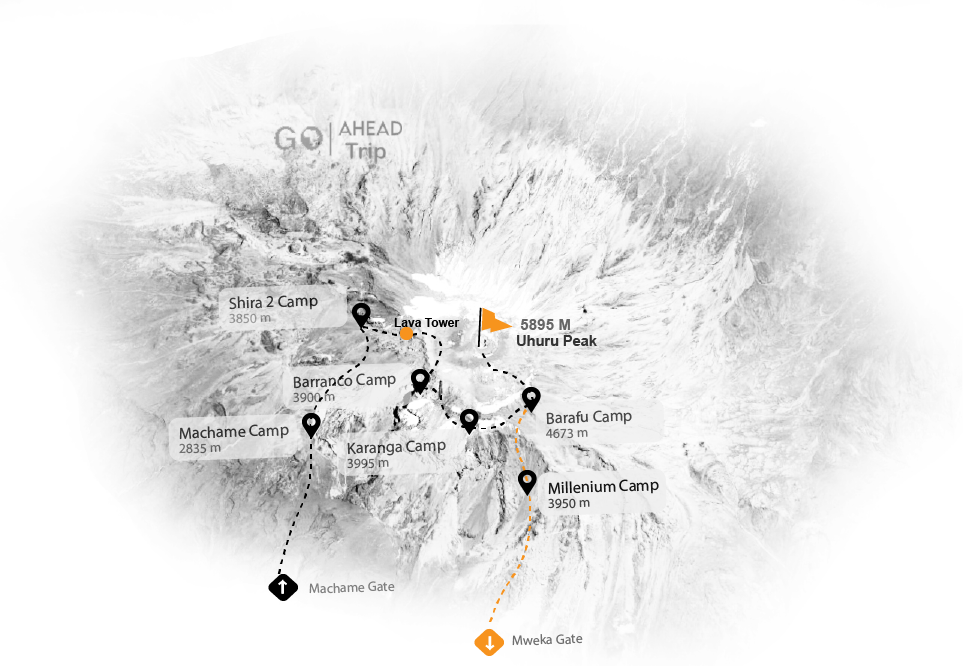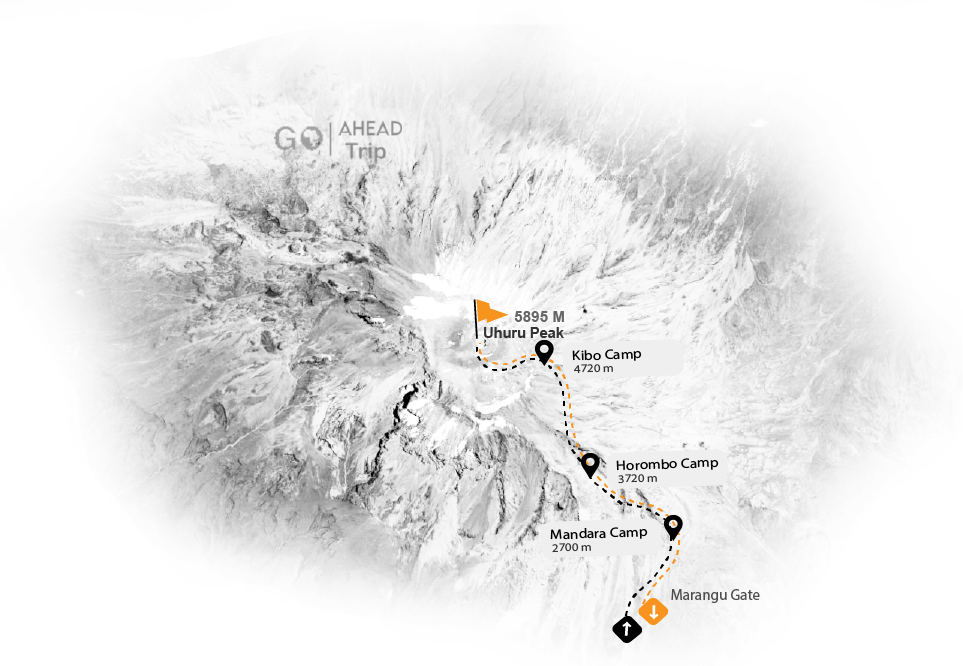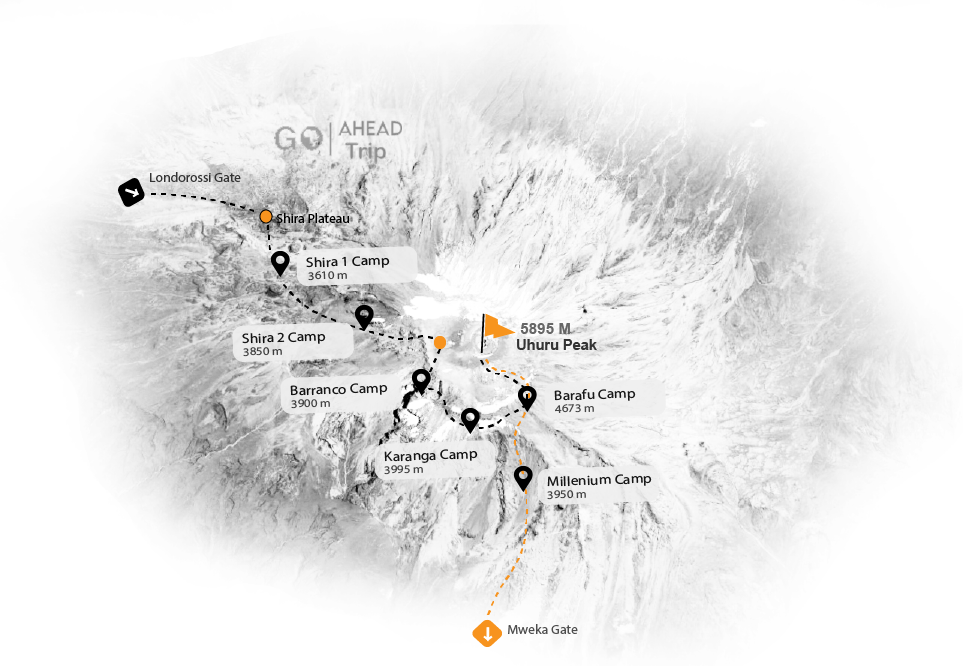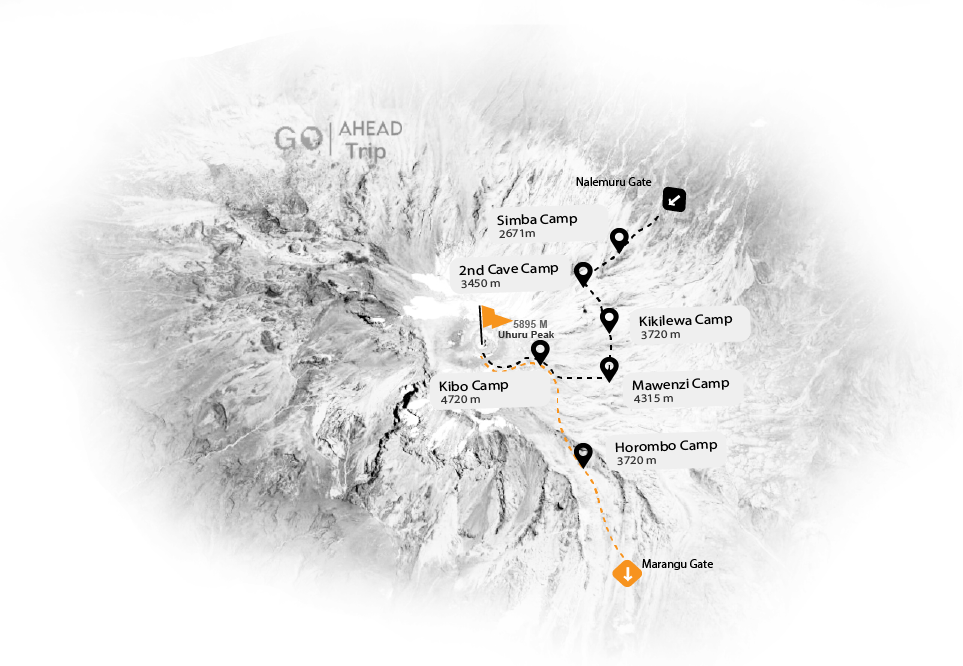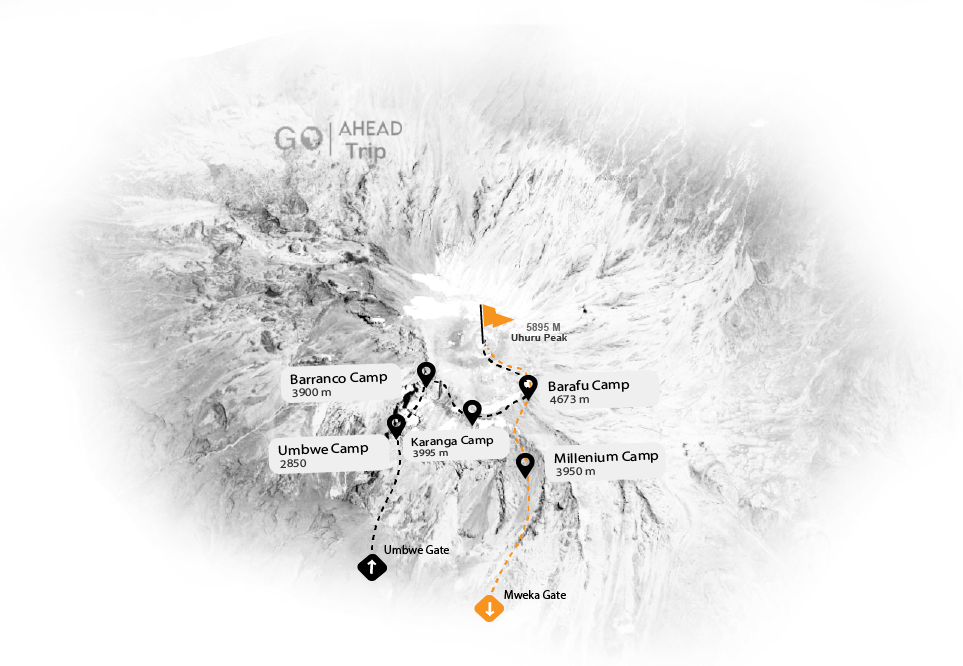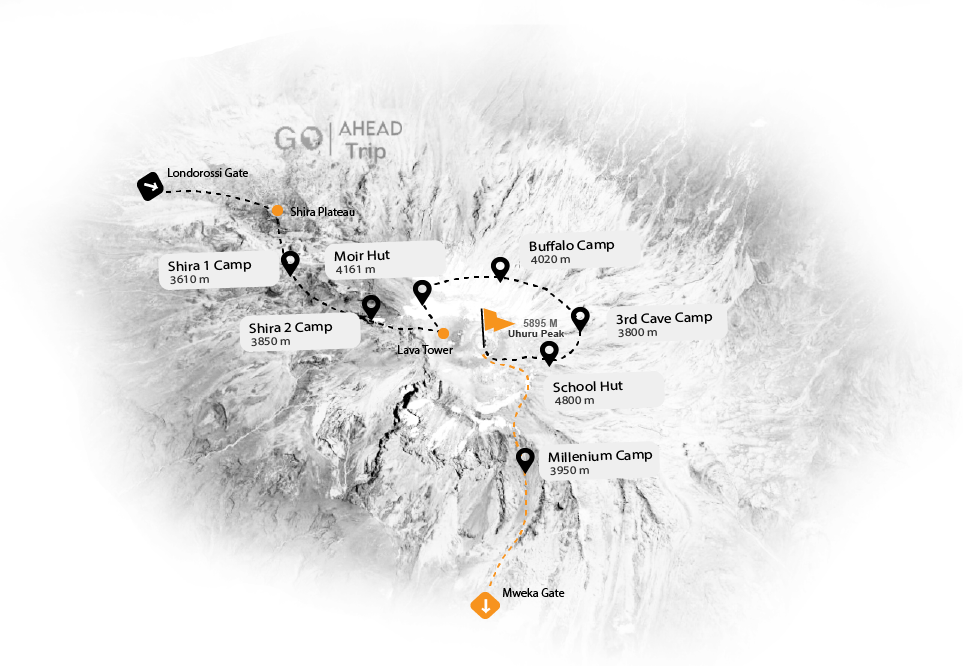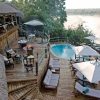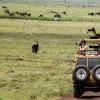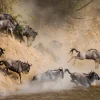Tanzania, a land synonymous with legendary safaris and stunning natural beauty, is also home to two of Africa’s most iconic peaks. At the heart of the northern safari circuit, rising majestically from the plains, stand Mount Kilimanjaro and its often-overlooked neighbor, Mount Meru. For adventurers dreaming of a high-altitude challenge, the crucial question isn’t just if you should climb, but which one to choose. While one promises the glory of standing atop Africa’s highest point, the other offers a unique, wildlife-rich experience that is just as rewarding.
This comprehensive guide will help you navigate the choice between these two incredible mountains. We will explore the unique characteristics of each trek, delve into the key differences in difficulty, duration, and cost, and provide the insights you need to confidently choose the right trek for your adventure.
The Ultimate Challenge: Climbing Kilimanjaro
The name alone evokes a sense of awe and adventure. As the highest peak in Africa and the tallest free-standing mountain in the world, Mount Kilimanjaro is a bucket-list destination for climbers from around the globe. Its summit, Uhuru Peak, stands at an impressive 5,895 meters (19,341 feet).
The journey to the top is an epic expedition that is more of a demanding high-altitude hike than a technical climb. Trekkers do not need specialized mountaineering skills, but they do need to be in good physical condition and have a strong will.
One of the most appealing aspects of a climbing Kilimanjaro adventure is the incredible diversity of landscapes you’ll encounter. A typical multi-day trek takes you through five distinct climate zones:
- Cultivation Zone: The fertile lower slopes, where you begin your journey through farmland and small villages.
- Rainforest Zone: A lush, green paradise filled with giant ferns, moss-covered trees, and the sounds of tropical birds and monkeys.
- Moorland Zone: As you ascend, the forest gives way to open moorland, characterized by hardy shrubs, giant heathers, and stunning views of the surrounding plains.
- Alpine Desert Zone: This stark, rocky landscape is where the effects of altitude truly begin to set in. Temperatures drop dramatically, and vegetation becomes sparse.
- Arctic Zone: The final push to the summit takes you through a landscape of ice, rock, and glaciers—a stark contrast to the tropical country below.

There are numerous routes to the summit, each offering a different experience. The most popular include:
- Machame Route: Known as the “Whiskey Route,” it’s a challenging and beautiful trek over 6 or 7 days, with an excellent acclimatization profile.
- Lemosho Route: Widely considered the most scenic route, this 7- to 9-day trek offers a more remote start and high success rates due to its gradual ascent.
- Marangu Route: The oldest and most famous route, also known as the “Coca-Cola Route.” It’s the only one with communal sleeping huts, but its shorter duration and steep profile give it a lower success rate.
The cost of climbing Kilimanjaro is significantly higher than Mount Meru, with prices typically ranging from $2,000 to $4,000+ per person. This includes park fees, crew wages, equipment, and food for the entire duration of the trip. The ultimate reward is the triumphant moment of reaching the summit and watching the sunrise over Africa.
The Hidden Gem: Climbing Mount Meru
Situated in Arusha National Park, Mount Meru is a spectacular stratovolcano that often lives in the shadow of its more famous neighbor. At 4,566 meters (14,980 feet), it is Africa’s fifth-highest peak, but it offers a far more intimate and unique trekking experience. A Mt Meru climb is an excellent choice for a wide range of trekkers, from beginners to seasoned hikers seeking a new challenge.
One of the biggest draws of a Mount Meru trek is the unparalleled opportunity for wildlife viewing. The lower slopes are located within Arusha National Park, meaning your trek begins as a game walk. You will be accompanied by an armed ranger to ensure your safety as you pass through habitats teeming with giraffes, zebras, buffalo, and a variety of monkeys. Trekking through the forest and seeing wildlife is a highlight that you won’t get on Kilimanjaro.

A climbing Mount Meru trip typically takes 3 to 4 days, making it a perfect option for those with limited time or budget. The trek offers a challenging and rewarding experience, with a steep and exhilarating final ascent to the summit, known as Socialist Peak. The views from the top are nothing short of spectacular, including an amazing vantage point to see Kilimanjaro looming in the distance.
Furthermore, Mount Meru is an ideal acclimatization trek before attempting the larger Mount Kilimanjaro. Its high altitude and challenging final push prepare your body for the rigors of a longer, higher climb, significantly increasing your chances of success on Kilimanjaro.
Key Differences: A Detailed Comparison
Which Trek is Right for You? A Final Verdict
The choice between the two legendary mountains ultimately depends on your personal goals and experience.
- Choose Kilimanjaro if: Your primary goal is to conquer an internationally recognized peak and stand on the “Roof of Africa.” You have the time, budget, and physical fitness for a long, arduous trek. The prestige and sense of accomplishment from climbing Kilimanjaro are your main motivators.
- Choose Mount Meru if: You are a wildlife enthusiast who wants a fantastic trekking experience with the bonus of a safari-like adventure. You have limited time or a smaller budget, but still want a challenging and rewarding high-altitude climb. An mt meru climb is also the perfect way to test your body at altitude before taking on a larger challenge.
Regardless of your choice, both mountains offer a profound and memorable experience that connects you to the heart of Tanzania’s wild and beautiful landscape.

